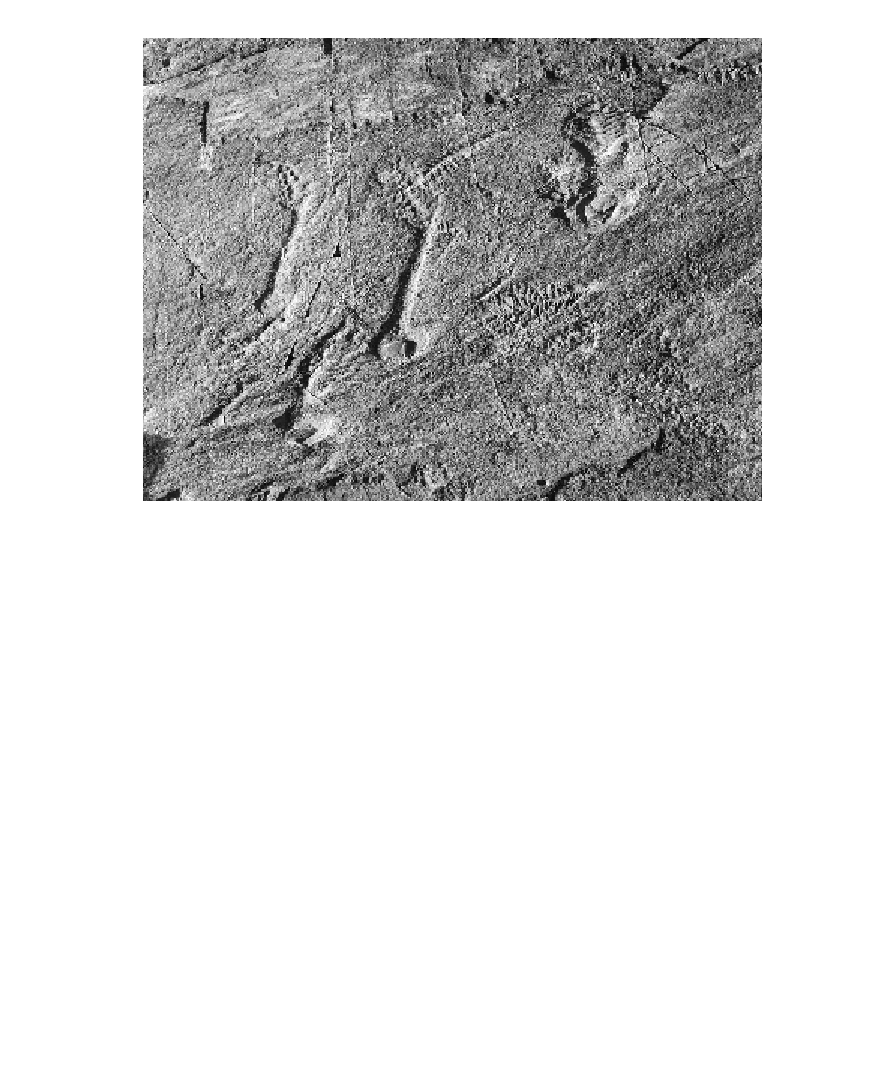Geoscience Reference
In-Depth Information
fig. 13.
Charniodiscus
and
Beothukis
on the famous and now carefully protected
'E surface' at the Mistaken Point Nature Reserve, Avalon Peninsula, Newfoundland.
The fossils on these cliff tops represent the Ediacaran biota living on a sea floor
that was covered in volcanic ash. The erosion of the soft ash above has revealed
the impressions of these organisms. The ash has also allowed direct radiometric
dating of this rock to 565 million years old.
How did these early ecosystems differ from the ecosystems that
would come to characterize the Phanerozoic Eon—the one that we
live in now? As well as the frond-shaped 'quilts' that might have fed
directly from the water column by osmosis, other Ediacarans, includ-
ing the pear drop-shaped
Kimberella
, may have been scratching and
grazing on the surface of the microbial mats. Still others, like the
elongate
Spriggina
, named for Reginald Sprigg, look superficially a lit-
tle like arthropods. Ediacaran assemblages also include early records
of sponges. Many of these organisms were probably making a living
feeding on the widespread bacterial biomass. However, none of them


Search WWH ::

Custom Search